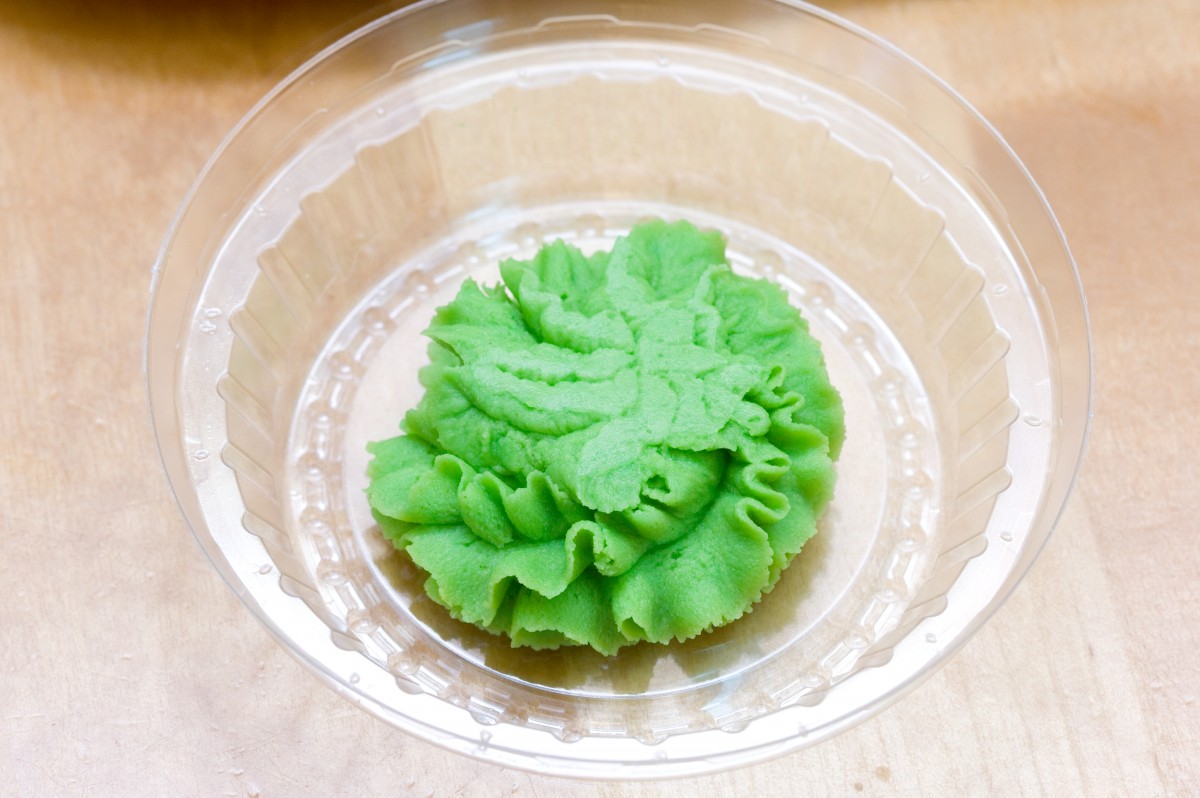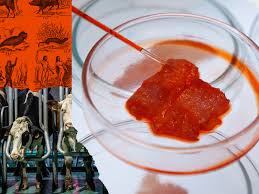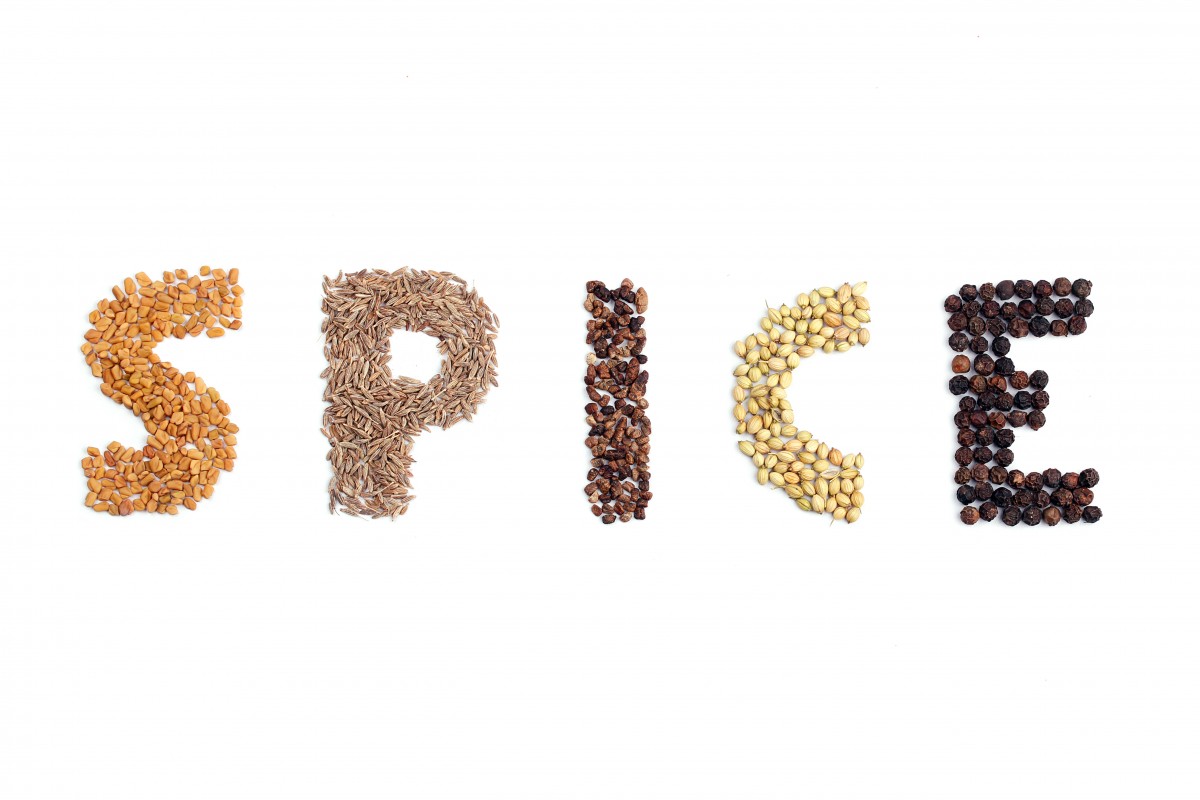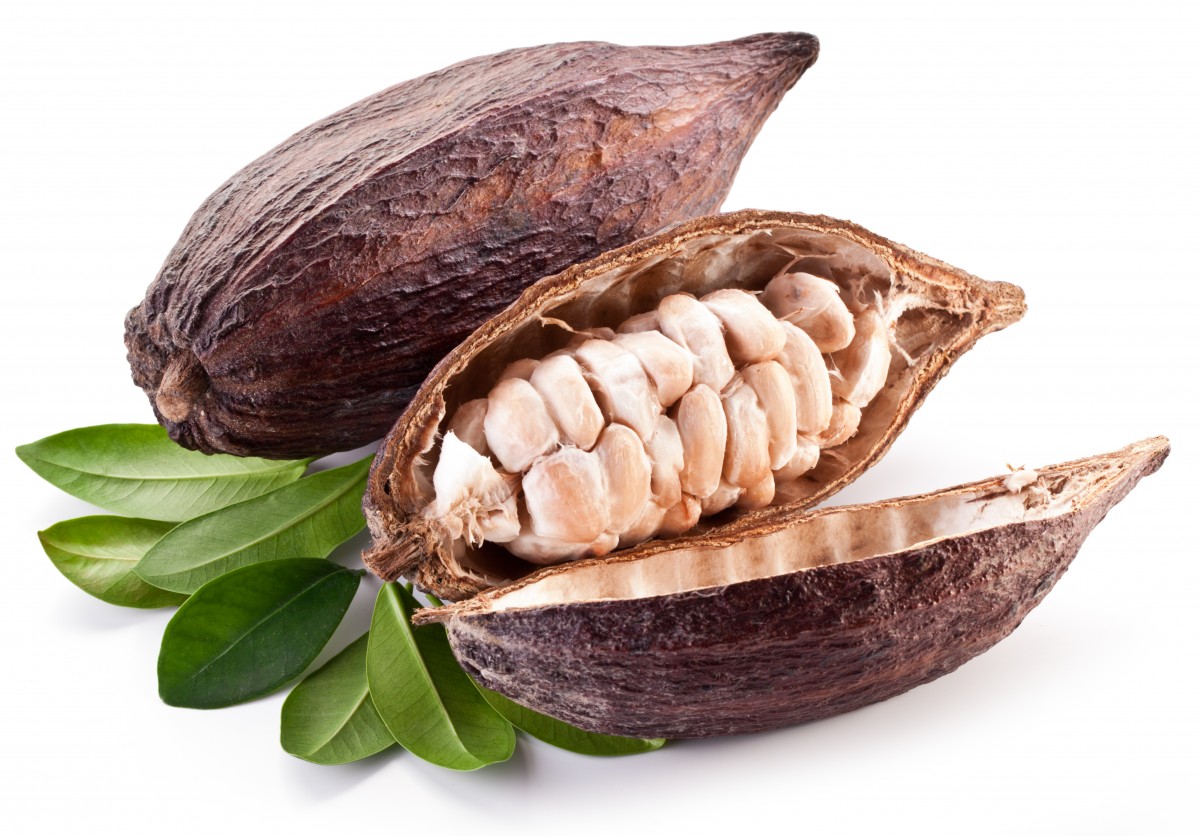
When we first decided to add wasabi to our mustard, we did so solely because it tastes great. The unique, nasal-cavity-clearing, Japanese variety of horseradish really livens up a roast beef sandwich, a pretzel, or even a potato salad. But it turns out we at DFC were ahead of a health curve with our wasabsession: Researchers in Japan (naturally) have determined that the bright green sushi condiment may help elderly folks with cognition.
The magic ingredient in the pungent rhizome is hexaraphane, a mustard oil that is present in wasabi in small amounts and has already been determined to have anti-inflammatory and antioxidant effects. The researchers created a new study to test if hexaraphane had an impact on brain function as well.
“In total, 72 healthy adults aged from 60 to 80 were divided into two groups for the research, with one taking 0.8 milligrams of hexaraphane as a daily supplement — equivalent to 5 grams of wasabi — for 12 weeks, while the other was given a placebo.
Post-trial cognitive tests showed that the group taking the supplement showed a significant improvement in their episodic and working memories compared to the placebo group.
Cognitive improvements were particularly evident in terms of their ability to process short conversations, perform simple calculations, and match names with faces.”
The study team believes their results can underpin a potential industry of memory-boosting products for elders. Until that happens, I might want to DIY this: 5 grams of straight wasabi per day sounds pretty doable, especially if accompanying a delightful sashimi lunch! Unfortunately, the amount of wasabi we use in our mustard is a trade secret, so we can’t tell you how much you’d need to consume to benefit your memory… So let’s just say, “plenty,” shall we?

Things are cooking – pardon the pun – in the cultivated meat space, and the nation of Italy has just turned up the heat! Preempting a safety assessment by the EU, which is predicted to go through, the Italian parliament has banned cultivated meat in the country, as well as the use of meat-related terms, like “steak,” to describe plant-based alternatives.
Cultivated meat is a cruelty-free animal product, in which regular cuts of meat are grown in a lab from cells harvested from still-living livestock. In handing down their ruling, Italy asserted that a ban would support Italian farmers, and protect the country’s renowned culinary heritage. Fines between €10,000 – €60,000 will be levied per violation.
Naturally, folks are upset over Italy’s ban, the first in the world. Not least among them are developers of cultivated meat, like Netherlands-based Mosa Meat. They particularly take umbrage at the parliamentarians’ questioning of the quality of their results.
“Italy’s decision to reject cultivated meat sets it apart from other nations. Such products have been sold in Singapore since late 2020, and in June the US Department of Agriculture approved two companies – Upside Foods and Good Meat – to make and distribute cultivated meat, following initial safety approvals from the US Food and Drug Administration. These two firms are now selling their chicken products at restaurants in San Francisco and Washington DC, respectively. […]
In Romania, however, the Senate has voted to prohibit the sale of cultivated meat, and this measure awaits approval by the lower house of parliament. If enacted, it would mean fines of between €40,000 and €60,000 for violations.”
As someone who’s always enjoyed Italian food – and appreciated their curation of it – I can see where the concerned lawmakers are coming from. But, given the pressures on our environment exacted by traditional meat production, as well as the animal cruelty factor, I wonder if it might be time to forge a new tradition. The main selling point of cultivated meat is that it is indistinguishable from slaughtered meat. This makes Italy’s ban, in my eyes, purely philosophical. And I don’t know if our planet has enough time for this debate!

Sometimes the coolest part of science is when your hypothesis doesn’t work out. That’s what happened to a team of researchers from the Australian National University, as reported recently by the delicious food blog Gastro Obscura. They attempted to investigate if there was a scientific reason behind the correlation between the spiciness of a location’s cuisine and the average temperature, weather-wise. They even created a handy chart cross-referencing the mean number of spices used in recipes with the region’s mean annual temperature. The numbers clearly show that as the temperature goes up (from a low in Norway and Japan to a high in South India and Thailand), so do the cuisines’ spice levels.
There are, of course, pleasantly fascinating exceptions to the rule.
“Some of the world’s spiciest food comes from countries with the hottest climates: Indonesia and Thailand, the Caribbean and Kenya, and several Indian states, including Punjab, Rajasthan, and Gujarat. These places cluster together in the upper right corner of the graph. One country outdoes all of them: Ethiopia, spicier by far, despite having a slightly lower average temperature than all of them.
 If you want to know just how spicy Ethiopian cooking can get, try some doro wat, a fragrant, slow-cooked chicken stew that one reviewer describes as, “Very spicy. Super spicy. Like I-don’t-know-how-Ethiopians-have-any-taste-buds-left spicy.” On the other hand, some very hot countries are considerably less spicy: The Philippines is in the same spiciness league as Hungary, and Ghana is as spice-poor as the UK.”
If you want to know just how spicy Ethiopian cooking can get, try some doro wat, a fragrant, slow-cooked chicken stew that one reviewer describes as, “Very spicy. Super spicy. Like I-don’t-know-how-Ethiopians-have-any-taste-buds-left spicy.” On the other hand, some very hot countries are considerably less spicy: The Philippines is in the same spiciness league as Hungary, and Ghana is as spice-poor as the UK.”
The team theorized that a greater amount of spices is being used in hotter climates as a preservative, to reduce the risk of foodborne illnesses. They were, however, unable to prove this, because it turns out the collision of food and culture is far too complex to be the result of one reason! Which I’m glad of – sometimes a bit of mystery is welcome in the human experience. Not knowing the reason why doesn’t reduce the enjoyment I get out of trying out a yemisir wat recipe, or developing spicy new condiments. In fact, it increases it!

I love blueberries. I’ve opened many clamshells of the tiny, tart, antioxidant fruits in my lifetime—sometimes to spoon them out into a bowl of fresh cream and demerara sugar and dive right in, and sometimes to have my heart sink at the sight of those beautiful little berries covered in grey mold. So imagine my delight to hear that researchers at the Kunming Institute of Botany, Chinese Academy of Sciences, have derived an entirely natural preservative from blueberries’ garden neighbour, the sunflower, which fights that destructive fuzz!
Sunflowers are already grown and harvested commercially for their seeds and the oil they produce. The team zeroed in on the chief waste product of this industry—the stems. They followed a hypothesis that the pathogen-fighting compounds within them that kept the sunflowers safe might transfer to other plants. The results were kind of stunning and showed a great deal of promise for non-pesticide antifungals in the agricultural industry.
“The researchers used methanol and ethyl acetate to prepare extracts from sunflower stems. They then isolated and identified the components in these extracts, focusing on diterpenoids, which are known to have biological activity. They found 17 diterpenoids, including four previously unknown compounds. Most of the diterpenoids showed activity against gray mold. Four of the compounds—including two of the newly identified ones—were effective at destroying the plasma membrane of this fungus, causing its cells to leak and preventing it from forming biofilms. In another test, the researchers briefly wet blueberries with the receptacle extracts, then dried the fruits and injected them with mold spores. Over a period of six days, the receptacle extracts protected almost half the berries from mold growth.”
I’m so excited at the prospect of never losing another precious berry to post-picking decay—especially if it’s not at the hands of a toxic fungicide. Plus, this is yet another clever use of a waste product for maximum benefit. Here’s hoping we see it on our tables (and in our bowls full of cream and sugar) soon!
AI Helps Battle Rancid ScourgeAs AI embeds itself further into our culture—and becomes increasingly better at mimicking people—humans in turn are finding new ways of making it work for us. Now, a team from Clemson University has harnessed AI to avert one of humanity’s peskiest culinary disasters—rancidity.
Foods go rancid when the oils or fats in them are exposed to oxygen, breaking down into unpleasant-tasting component molecules. (If you’ve ever chomped on a too-long-opened bag of chips or nuts, you know that particular metallic grossness.) Companies routinely add tiny amounts of antioxidants to foods that are prone to oxidization, in order to combat the process and preserve freshness. Sometimes it can be too much of a good thing: Certain antioxidants, in combination, cancel out each other’s effects. But figuring out when this happens and in what combos is a herculean task—one that authors Carlos D. Garcia and Lucas de Brito Ayres have figured out is perfect for AI.
unpleasant-tasting component molecules. (If you’ve ever chomped on a too-long-opened bag of chips or nuts, you know that particular metallic grossness.) Companies routinely add tiny amounts of antioxidants to foods that are prone to oxidization, in order to combat the process and preserve freshness. Sometimes it can be too much of a good thing: Certain antioxidants, in combination, cancel out each other’s effects. But figuring out when this happens and in what combos is a herculean task—one that authors Carlos D. Garcia and Lucas de Brito Ayres have figured out is perfect for AI.
“… We selected a type of AI capable of working with textual representations, which are written codes describing the chemical structure of each antioxidant. […]
Once the machine could recognize general chemical patterns, like how certain molecules react with each other, we fine-tuned it by teaching it some more advanced chemistry. For this step, our team used a database of almost 1,100 mixtures previously described in the research literature.
At this point, the AI could predict the effect of combining any set of two or three antioxidants in under a second. Its prediction aligned with the effect described in the literature 90% of the time.”
The team trained the AI further on 200 examples from their own lab, which netted them predictions that were more accurate to their real-world experimental results. The team likens an AI like theirs to “a very clever assistant,” which can run boring or monotonous tasks for its human handlers, and spit out the results they need. In helping solve the problem of rancid food, this AI/human pairing might just be our model for collaboration in the future!

In DFC’s neck of the (literal) woods, we don’t get many trick-or-treaters. But I have many fond memories of busy Halloweens back when we lived in the suburbs. My kids especially loved going next door in their spooky costumes, to be rewarded by full-sized chocolate bars—the king of treats!—from our impressed neighbours.
Now, a team of researchers has shown that chocolate is not only the best thing to find in your pumpkin-shaped candy bucket tomorrow night. Its chief waste product—cocoa pod husks—could have big benefits for human health. The team, led by the University of St. Andrews, has processed the external hulls of the cocoa bean into a plant-derived flame retardant. This innovation is two-pronged: not only does it find a use for a whopping 20 million tonnes of biomass that’s usually just thrown out, it also has the potential to pivot the flame retardant industry away from harmful petrochemicals.
It all started with the fact that cocoa pod husks are high in lignin, a tough polymer found in hardwood trees and other woody plants, which can be processed out for practical applications.
“The researchers obtained cocoa husks and milled them into a powder. After rinsing to remove fatty residues, they boiled the powdered husks in a mixture of butanol and acid, a standard lignin extraction method called the butanosolv process. They next confirmed the isolated lignin’s quality and high purity, finding no evidence of carbohydrates or other contaminants.
Then, over the course of three chemical steps, the team modified the pure lignin biopolymer to have flame-retardant properties. They attached 9,10-dihydro-9-oxa-10-phosphaphenanthrene-10-oxide, which is a fire suppressant molecule called DOPO, into the backbone of the lignin polymer. In experiments, when the modified lignin was heated, it charred—but did not burn up—a sign that it could act as a flame retardant.”
The team’s results are promising enough that they plan to move into testing phases, including key human safety tests. Flame retardants have long been a necessary evil; Sure, they protect us from fires, but all the while they leach into our water, fellow animals, and even ourselves. Perhaps this new, chocolatey variation will bring as much joy to the environment as Halloween candy does to our tongues!

Longtime readers in this space might recall when we profiled “Torched Earth” ale, an offering from the famous Colorado brewers New Belgium. They gave drinkers a taste of a future in which we didn’t avert climate change – filling the beer with flavours of smoke (from wildfires, natch) and shelf-stable hops extract (hops needing reliable watering). Hoping to serve this brew as a warning bell, it was released for Earth Day 2021.
And now, two years later, with the warning gone unheeded, actual beer is now exhibiting some of the symptoms New Belgium gave us a preview of. The venerable Guardian reports that due to higher global temperatures – surprise surprise – hops production is down.
“In recent years, demand for high-quality hops has been pushed up by a boom in craft beers with stronger flavours. But emissions of planet-heating gases are putting the plant at risk, the study found.
The researchers compared the average annual yield of aroma hops during the periods 1971 – 1994 and 1995 – 2018 and found “a significant production decrease” of 0.13 – 0.27 tons per hectare. Celje, in Slovenia, had the greatest fall in average annual hop yield, at 19.4%. […]
The researchers modelled the effect of future warming on crops using an emissions scenario similar to current policies. By 2050, they found, hop yields will fall 4.1 – 18.4% compared with the average from 1989 – 2018 if no measures are taken to adapt. The projected decline will be driven mainly by hotter weather and more frequent and severe droughts.”
The researchers cited above (from the Global Change Research Institute of the Czech Academy of Sciences) state that if these trends continue, beer producers will have to increasingly invest in pricey interventions to keep their products flowing. This is not just expensive for individual producers and the industry, but can lead to even more harmful emissions as precious hops get shuffled around the planet! And this is not a regional problem: While a world without beer might seem trivial to some, it represents an increase in the temperature of the water that all of us frogs are in. If not now, when will we jump out?
Good news for tzatziki lovers! A team out of Ohio State University has been looking for food combos that reduce the pungency of garlic breath. Through a series of lab experiments, they’ve determined that high-fat and high-protein foods work the best. That means that Greek yogurt might prove the magic elixir to save us all from the next bad job interview.
Their experiments were intriguing, yet delightfully simple:
“For each treatment experiment, the researchers placed equal amounts of raw garlic in glass bottles and confirmed the cluster of offending sulfur-based volatiles were released in concentrations that would be detected by the human nose. They used mass spectrometry to measure levels of the volatile molecules in gaseous form present before and after each treatment.
Results showed that yogurt alone reduced 99% of the major odor-producing raw garlic volatiles. When introduced separately, the fat, water and protein components of yogurt also had a deodorizing effect on raw garlic, but fat and protein performed better than water.
In the case of fat, a higher quantity of butter fat was more effective at deodorization. The proteins studied included different forms of whey, casein and milk proteins, all of which were effective at deodorizing garlic — likely because of their ability to trap the volatile molecules before they were emitted into the air. A casein micelle-whey protein complex performed the best.”
The team published their current research in the journal Molecules, and plans to further refine it with human-mouth trials soon. (That’s gonna be fun…) I find the chemistry that undergirds the foods we take for granted fascinating. It’s positively elegant that the solution to a food-based problem can be as easy as — more food! Now, I’m off to contemplate adding yogurt to our line of garlicky condiments… I’ll let you know how it goes!

From my long experience running a kosher household, I am very familiar with the many ways to replace meat in a meal! Lentils and mushrooms are fun, but they are very distinctively themselves; and while the offerings in the “fake meat” department, made with soy and pea protein, mimic flesh, they are often missing that special something: fatty mouthfeel. This leads to dishes that are “close but no cigar,” or outright dry as heck.
Thankfully, a team at the University of Leeds has taken on this conundrum on behalf of meat-decliners everywhere. They’ve developed a process of embedding extra water inside plant proteins, a concept they call microgelation. In, for example, a burger, the inexpensive addition is read by the diner’s tongue as juiciness appropriate to the dish, making for a more authentic—and tastier!—result.
“Plant proteins – which start off as dry with a rough texture – are placed in water and subjected to heating. This alters the structure of the protein molecules which come together to form an interconnected network or gel which traps water around the plant proteins.
The gel is then homogenized, which breaks the protein network into a microgel made up of tiny particles that cannot be seen with the naked eye. Under pressure, as they would be when they are being eaten, the microgels ooze water, creating a lubricity akin to that of single cream [about 18% milk fat].”
The researchers used an atomic force microscope to observe the behaviour of the water molecules, which confirmed the predictions their math made. They envision that this innovation will not just make current vegans’ and vegetarians’ lives better, but can help convert even more omnivores away from meat eating. Hopefully enough to have an effect on factory farming rates and the environmental fallout thereof! I love that this makes plant-based bliss even more accessible. Especially in a special holiday dinner made by yours truly—in my house, taste is the most important result of scientific endeavour!

There’s a very good reason humans love sugar: In our evolutionary past, our brains required huge amounts of fuel to become the giant meat computers we have today, and we’re still hardwired to seek out that quick energy boost in any way we can. But, in our modern societies, sugar is more plentiful than it was long ago, and that urge to gorge on sweet berries because who knows when we’ll find them again is fulfilled far more than it should be.
Hence our (shorter) history of trying to cook up decent sugar substitutes—ones that lessen the burden on the body while still having the mouthfeel and sweetness level that our brains and tongues know oh so well. Once upon a time, there was aspartame, which I always thought gave Diet Cokes an unpleasant aftertaste. Most of us find even the most up-to-date alternatives, like stevia, unsatisfying.
But a team of researchers has delved deep into the complex chemistry of sugar’s unique flavour, uncovering building blocks that could potentially be used to replicate it from the ground up. Central to their work is cracking the length of time human taste buds perceive the sweetness of a substance. True sugar disappears rather fast, while artificial versions linger weirdly.
“Previously, Grant DuBois and colleagues observed that sodium chloride and potassium chloride could accelerate the onset of sweetness and eliminate its persistence for one stevia compound, rebaudioside A. […]
In initial tests with a trained sensory panel, the researchers observed that calcium chloride, magnesium chloride, and potassium chloride each separately reduced the perceived intensity of rebaudioside A after two minutes. However, again, high amounts of mineral salt were needed to lower the intensity by more than 30%, which caused unpleasant saltiness or bitterness sensations. Next, mixing the three taste-modifying salts had synergistic effects, allowing the team to use lower amounts of each for the same effect. A blend of the potassium, magnesium, and calcium salts reduced the lingering sweetness up to 79% and markedly increased the sugar-like mouthfeel of 10 noncaloric alternatives.”
It seems the secret to sugar’s success is salt! The team is excited by the near-perfect replication of sugar and theorizes future use in reduced-calorie beverages, for which there is a significant market. It is always good to have more options as we navigate taking care of these bodies of ours. Real sugar is a treat I could never give up, but I’d be happy to try this new technology—for science!